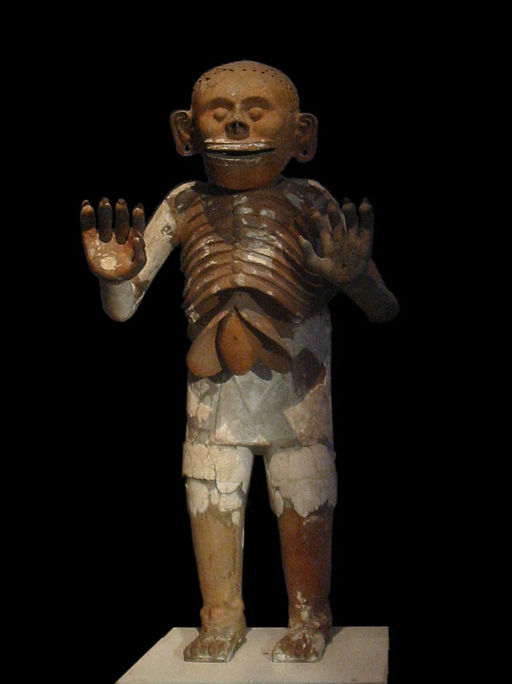The Gods of the Maya and Aztecs
With our last text, we have explored the culture of the Maya, the Aztecs, and the Inca. Today, we’d like to take a closer look and examine the spiritual realm of Central America. Sadly, Satan doesn’t make an appearance. Or does he?
Maya:
We all know about the Mayan calendar, at least since 2012, when something extraordinary happened. Behold: The numerical value of the start date of the Long Count Calendar’s thirteenth Baktun cycle repeated itself. "Huh?", you may ask yourselves, and rightly so. But to explain this phenomenon here and now would take a while. The important part is that this only happens every 5128 years. Because of a misinterpretation, mystics believed the end of the world was upon us. Luckily, things didn’t turn out quite as dramatic.
What people don't know is that the Mayan calendar is closely linked to the people's religion. It is assumed that each day corresponds to at least one of the numerous deities that determine the fate of mankind. Therefore, their benevolence is important, which is why the Maya held sacrificial rituals for their gods – sometimes harmless ones with flowers and incense, sometimes bloody ones with animal and human sacrifices.
If you look at the long list of their deities, it's hard to imagine how many sacrifices the Maya must have brought before them. Whether it be gods of fishing, bees, hunting, the earth, war, the calendar, earthquakes, rain, the four points of the compass, bats, or fertility: With the Maya, nothing remains free of religion. By the way, they have a kind of Satan as well: Ah puch, the demon of destruction or "Lord of the six hells". Whether or not Black Metal was involved is not known.
Unfortunately, we don't know a whole lot about the gods of the Maya, which can in part be attributed to the Spanish conquest in the 16th century. During this time, the Central American peoples were coerced into Christianity, the knowledge of their own religion was destroyed or lost. Today, most of this information can be gathered from the art of the Maya, such as sculptures, pottery, and paintings. There are also some writings. More than their interpretation is usually not achievable.
Aztecs:
As with the Maya, their gods also played a central role in Aztec culture, whether in their heaven Topan, their worldly realm Cemanahuatl, or their underworld Mictlan. The Aztecs attributed special importance to their rain god Tlaloc, because his good nature decided whether agriculture was going to be a success or not. Other important deities include the water god Atlaua, the corn god Cinteotl, and Opochtli, the god of hunting and fishing.
According to current knowledge, the sacrificial rituals of the Aztecs were more brutal and more frequent than those of the Maya. They mainly sacrificed prisoners of war and conquerors, but also warriors, slaves and even children from their own ranks. The ritual itself hinged on the deity for which the sacrifice was intended. Depending on the god or goddess, they were burned, pierced with arrows, flayed or "only" killed. Cannibalism also existed among the Aztecs, namely in the form of the ritual consumption of defeated opponents. In science, discussions continue to this day about whether the rituals of the Aztecs were really quite that cruel or whether these stories were inventions of the Spanish conquerors. It is now considered proven, however, that this was the case. For all the important contributions of the Mayan and Aztec peoples to the culture of mankind, we have to say: Those were some crazy times…
By the way: The Aztecs, too, have a sort of Satan, a "Lord of death" and ruler of the underworld. His name was Mictlantecuhtli. Sounds demonic, but doesn’t really make a great band name.
Text: Timon Menge
Translation: Victoria Schaffrath



